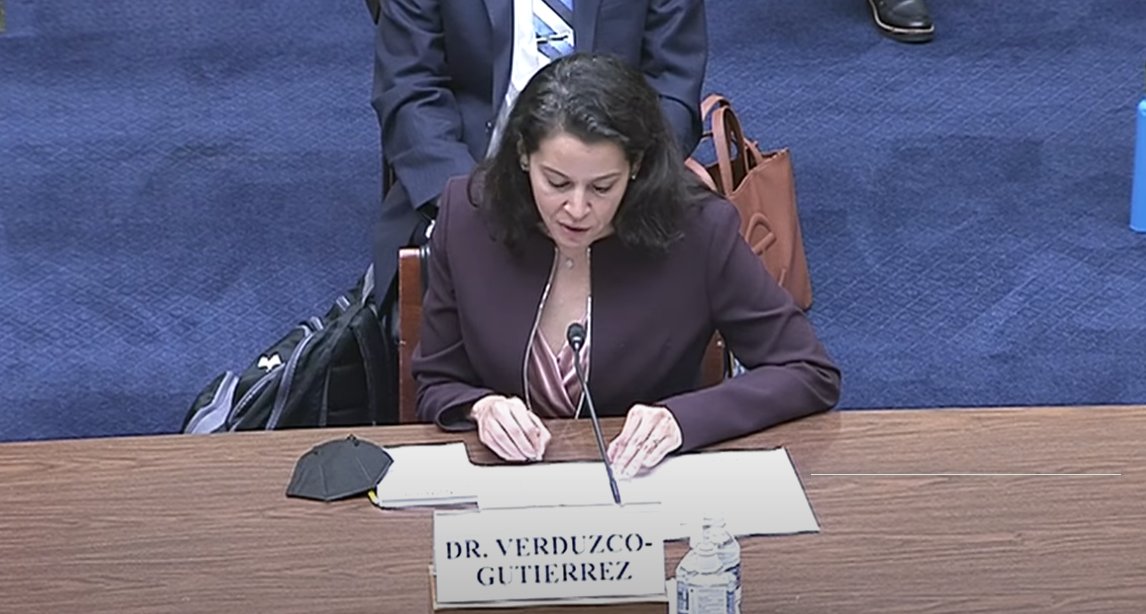[Text/Observer Network Liu Qian]
On the morning of the 19th local time, the US House of Representatives subcommittee held a hearing dedicated to “understanding and addressing the long-term new crown and its consequences.” According to data provided by the subcommittee, about one-fifth of adults in the United States currently infected with the new crown virus still have “long new crown” symptoms, and about one million Americans have been dragged out of the job market by related symptoms.
According to the definition of the World Health Organization, “Long Covid” is a disease that people infected with the new coronavirus may face. Generally, symptoms appear three months after the initial onset of the new crown, last for more than two months, and cannot pass other diagnoses. to explain. These symptoms often include: fatigue, shortness of breath, dizziness, brain fog, loss of smell or taste, and more.
The hearing was chaired by Rep. Jim Clyburn and broadcast live, according to the House website. Witnesses at the meeting included: Dr. Monica Verduzco-Gutierrez, a public health expert, Katie Bach, an economist, and a patient with a “long new crown”.

Screenshot of U.S. House of Representatives website
Verduzzo-Gutierrez is a professor at the University of Texas Health Sciences Center in San Antonio and a physician specializing in physical therapy and rehabilitation. In her written testimony, she described the suffering of many “coronavirus” patients. A cancer patient she once treated told her that the physical fatigue caused by the new crown is 100 times worse than the degree of cancer fatigue.
“I’ve treated a lot of nurses and doctors — some of them couldn’t go back to the operating room, to the front line of treatment, or to the patient’s bedside,” she said, “and there were marathon runners who couldn’t even run a mile. A young mother becomes so short of breath once her heart rate reaches 180 that she can’t even catch up with her baby.”
At the same time, many “long-term new crown” patients often perform well in routine examinations, which makes them unable to obtain good diagnosis and treatment, and unable to obtain corresponding disability benefits and insurance compensation.
“Some patients may complain of shortness of breath, but lung imaging shows no obvious abnormality; some patients with brain fog are unable to organize their speech, or have head vibrations, dizziness,” Verduzzo-Gutierrez said. But after the MRI, their brains were all normal; the patient who was feeling 100 times more fatigued than the cancer had all the tests normal.”

Public health expert Dr. Monica Verduzzo-Gutierrez speaks, video screenshot
According to a U.S. government survey released last month, about 40% of adults in the United States said they had been infected with the new crown virus, and about one in five of them still suffer from “long new crown” symptoms. About 1 million Americans have lost their jobs and, in some cases, insurance because of related symptoms.
In addition, according to the American Academy of Pediatrics, nearly 13.8 million children in the United States have tested positive for the new crown since the outbreak of the new crown. Among all children and adolescents who have been infected with the new crown, the probability of developing “long new crown” symptoms is about 25%.
Economist Katie Bach is a researcher in the field of public employment at the Brookings Institution, a well-known American think tank. In her written testimony, she said that there are currently about 16 million Americans suffering from “coronavirus” disease. About 25%-65% of these patients (about 2.4% of the employed population in the United States) are impaired in their ability to work.
“This (number) may sound outrageous. But it is consistent with other similar economies,” she said.
Bach pointed out that a representative of the Bank of England said a few days ago that the labor force participation rate of the British population aged 16-64 fell by 1.3%, which may be related to the symptoms of “long new crown”.
The widespread impact of the “long Covid-19”
According to a report by Bloomberg on the 18th, there is currently no unified definition of “long new crown”. In addition to the WHO definition, other countries and organizations have proposed alternative definitions. For example, the British health department refers to the situation that the symptoms last for 4 weeks as “persistent symptomatic new crown”, and the situation that lasts for 12 weeks is called “new crown syndrome”.

Report screenshot
Symptoms include fever, cough, palpitations, and chest, joint, muscle, or abdominal pain, in addition to fatigue, shortness of breath, and brain fog. Others include, neurological symptoms: headache, disturbed sleep, numbness or dizziness; digestive problems: nausea, diarrhea or decreased appetite. Some people report a decreased sense of taste or smell, etc. Depression or anxiety may also occur.
The report pointed out that most “long new crown” symptoms do not appear to be life-threatening, but conditions such as shortness of breath or fatigue may cause some degree of disability. The broader impact is that the disability caused by the “long new crown” will increase the medical burden, the treatment of depression and pain will lead to a surge in suicide or opioid use, and the social labor participation rate will also decline. These have the potential to have serious social and economic consequences.
According to statistics from Johns Hopkins University in the United States, as of 6:21 on July 20, Beijing time, the cumulative number of new coronary pneumonia infections in the United States reached nearly 90 million, reaching 89,824,057, and the cumulative number of deaths reached 1,024,821. In the past 25 hours or so, there have been 166,163 new infections and 816 new deaths in the United States.
This article is an exclusive manuscript of Observer.com and may not be reproduced without authorization.